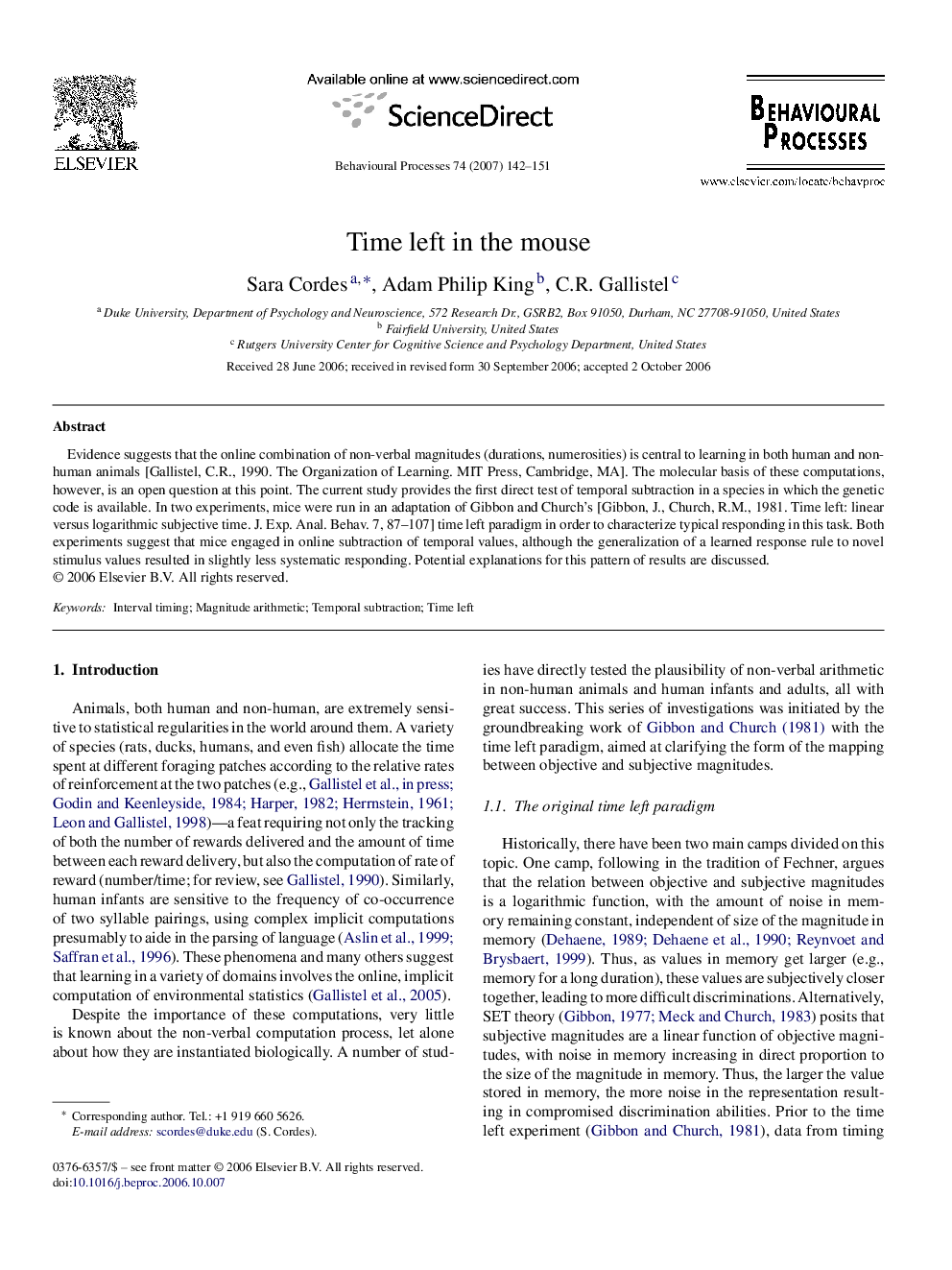| Article ID | Journal | Published Year | Pages | File Type |
|---|---|---|---|---|
| 2427761 | Behavioural Processes | 2007 | 10 Pages |
Evidence suggests that the online combination of non-verbal magnitudes (durations, numerosities) is central to learning in both human and non-human animals [Gallistel, C.R., 1990. The Organization of Learning. MIT Press, Cambridge, MA]. The molecular basis of these computations, however, is an open question at this point. The current study provides the first direct test of temporal subtraction in a species in which the genetic code is available. In two experiments, mice were run in an adaptation of Gibbon and Church's [Gibbon, J., Church, R.M., 1981. Time left: linear versus logarithmic subjective time. J. Exp. Anal. Behav. 7, 87–107] time left paradigm in order to characterize typical responding in this task. Both experiments suggest that mice engaged in online subtraction of temporal values, although the generalization of a learned response rule to novel stimulus values resulted in slightly less systematic responding. Potential explanations for this pattern of results are discussed.
